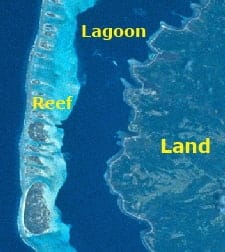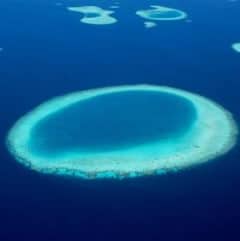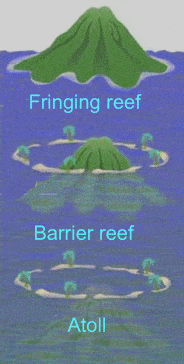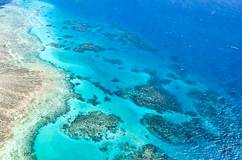Types of coral reefs
Most reef scientists generally recognize three MAJOR types of coral reefs: Fringing Reefs, Barrier Reefs, and Atolls.
The traditional and most widely recognized basis for differentiating these reef types is large-scale reef morphology; the size and shape of a reef, and its relation to nearby land (if any). This is usually (but not always) sufficient to clearly distinguish one type from the others.
Nonetheless, there is often a great deal of overlap among the major reef types (within a given biogeographic region) in terms of the dominant groups of animals and plants, as well as their ecological interactions.





